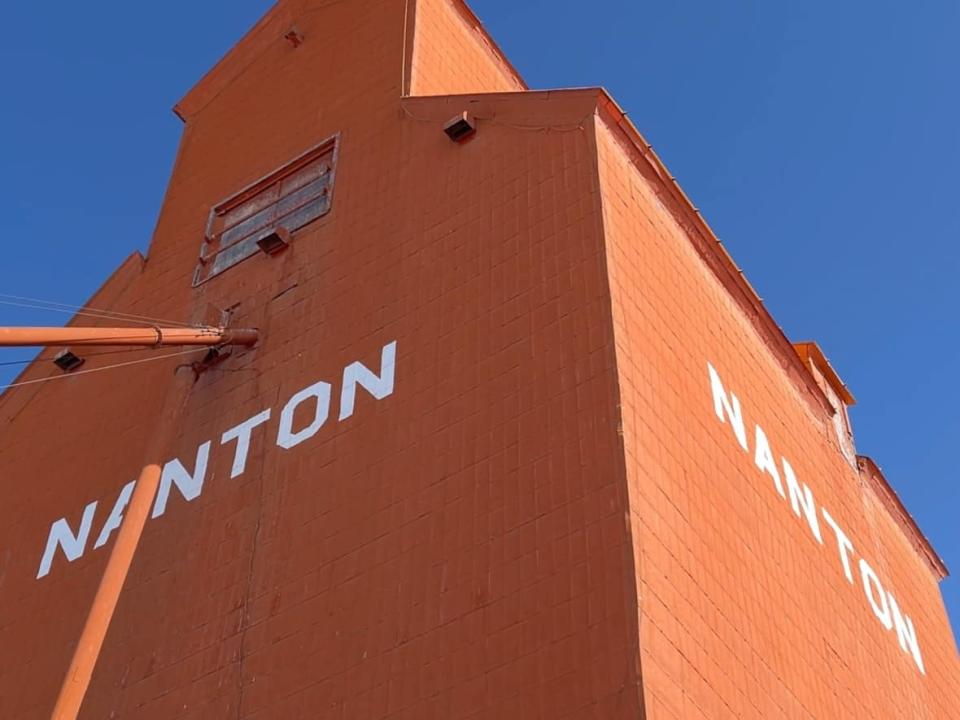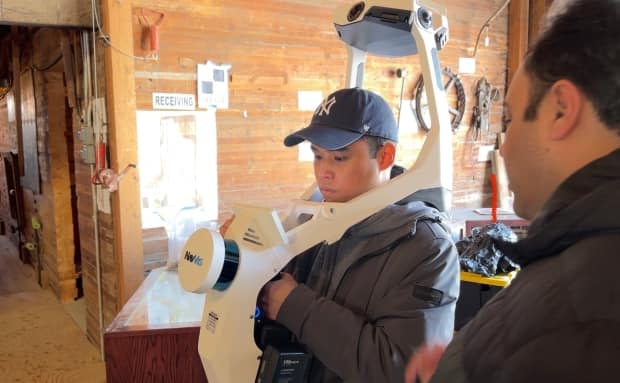Iconic Alberta grain elevators being digitally preserved in virtual reality project

Grain elevators are disappearing from the Canadian landscape at a staggering rate, but the small town of Nanton, Alta. is leading the tech race to save and preserve its own pair of prairie sentinels in the digital realm.
There are only 120 elevators left in Alberta, a number that's dropped from more than 5,000 in the 1950s. It's estimated around 10 to 15 elevators disappear every year, and are gone forever.
The elevators once moved grain from local farmers to worldwide markets via rail.
A project involving the University of Calgary, SAIT and Lethbridge College is underway in Nanton, south of Calgary, using the latest in 3D modelling technology to record and preserve its two elevators, which are approaching 100 years on the Alberta landscape.
"We reached out to the University of Calgary, who had a project documenting historical buildings around Alberta, and we asked if they wanted to come take a look at our elevators," said Leo Wieser, president of the town's Canadian Grain Elevator Discovery Centre.

"3D scanning them will preserve them in the digital universe forever," said Wieser.
Students from SAIT are using state of the art mapping devices and software to model the elevators. Then, students in Lethbridge will use the data to create a virtual reality space.
"The SAIT students get to put together a project, the U of C gets the data and we can generate drawings to use as we repurpose and renovate, which will help save these buildings for 100 more years," said Wieser.
"And God forbid if anything happens, we'll still have the digital record of how they were built and what the space was like," he said.
Nanton's elevators received provincial historic designation in 2022 and the digital record being created protects their history for future generations.
"It's incredible to put on a VR headset and be able to walk through something that exists across the world, so we open it up to a much wider audience," Wieser said.

The project allows SAIT's civil engineering students to get their hands on hundreds of thousands of dollars worth of cutting edge mobile 3D scanning equipment and get valuable experience.
"We use it to scan and build 3D models of buildings and other structures, confined areas and it's much quicker and extremely accurate," said Rick Duchscher, drone lead with SAIT's School of Construction.
Duchscher says the project gives the students an edge in being exposed to new tech that's not even available across industry yet.
"The technology is used by the geomatics industry and architects would find this technology very appealing as well, but it's limitless in terms of the different disciplines who would be utilizing this equipment," he said.
"It scans anything in close proximity so it's perfect for buildings like these," said civil engineering student, Dario Kastaun. "This is the way technology is moving so it's great to get a hands-on feel before it goes out to everybody in the industry."
"I'm just glad to be part of a project where we can bring back something that was almost lost. The end product will be like a Google maps kind of thing where you can walk around in high resolution and do a tour," he said.

The data gathered will be stored at the U of C archives for future use and will be available to the public.
Wieser says the project comes as his organization is in fundraising mode to continue the elevators' preservation, hosting events like movie nights, music concerts and different arts events, trying to make the elevators a focal point for the town and bring in visitors from surrounding towns and cities, including Calgary.
"The digital side is just an additional realm to the work we're trying to do to keep these things alive," he said.

